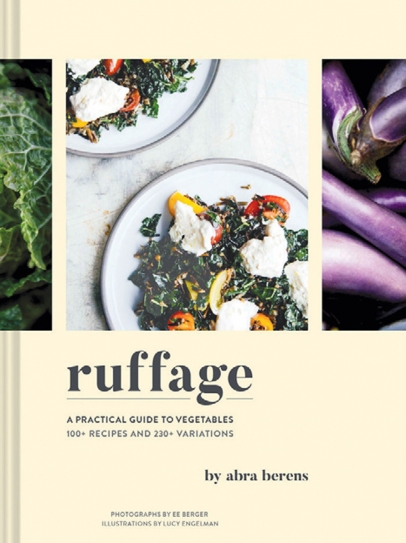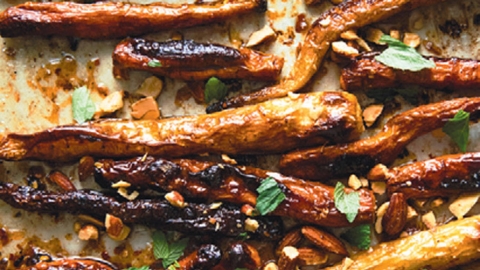Ruffage: A Practical Guide to Vegetables
It was the beginning of spring when I got my hands on a copy of this sumptuous yet earthy new vegetable cookbook from Michigan chef Abra Berens. Spring on the calendar, that is, which meant March, which meant that of the 39 Upper Midwestern vegetables included in the book few were to be found in my refrigerator of local foods at the moment. But for those four storage-hardy Michigan veggies that were—carrots, celeriac, parsnips and potatoes—Ruffage gave me a total of 10 recipes plus 27 variations on them. What a godsend, given that the fresh spring crops were at least two months away and that, over the past five months of winter blahs, my own creative cooking juices had driveled away to nearly nothing.
Ruffage: A Practical Guide to Vegetables is exactly that, but in its approach it is also tutorial and inspirational. I have a particular appreciation for this. In my previous career, I took my degree in agronomy to the job of running a produce department in an urban natural foods coop grocery store. Customer service was everything to us there, and shoppers were endlessly needy for information: How does this grow, what does it taste like, how do I store it, how do I prepare it?
Older shoppers needed to know about newer produce items; younger shoppers needed to know about almost everything. We took produce home to cook and shared our recipes and preparation ideas with customers who ate them up and returned to share how it went. It was great for sales and customer loyalty and also made the work a pleasure and even made for a satisfying profession.
Berens has her own passion for produce that she has developed and explored professionally in restaurants and on farms. She has cooked at Zingerman’s Deli in Ann Arbor, trained in Ireland at Ballymaloe Cookery School and organic farm, worked stints at farm-to-table restaurants in Chicago and was one of the farmers of Bare Knuckle Farm in Leelanau County. She currently is chef for Granor Farm in Three Oaks, an organic farm featuring farm-grown meals in season.
And that is what I appreciate so well in her first book. Berens brings her experience and chosen profession to the pages with an easy yet informative style. It’s kind of like she is at the market with you, helping pick out the veggies and explaining each one, then stepping into your kitchen and saying, “You can do this. Here are the few techniques you need to know, here is what is in your pantry to make use of and here is how you can change the leftovers into something new.”
To set the stage, Ruffage begins with some detailed explanations of cooking terms and techniques so that later when she mentions confit, acidulated water or her oft-used measurement of a “glug,” you know what she means. She also reviews the staple needs for a dependable and versatile pantry, from oils, nuts and herbs to grits, grains and pastas. Lastly is a set of 20 basic international condiments that you really can make yourself and all of which sound like they will take your home cooking instantly into the realm of trendy restaurant menus. These first 40 pages are well worth reading up front to get a good foundation for the recipes ahead.
But you can be forgiven if you dive right into the recipes. Divided into chapters by vegetable, each veggie gets at least two recipes using different preparation methods such as roasting, puréeing, braising and raw. Each recipe is then followed by three variations—change the condiment, use different spices, add nuts, give it a different role on the plate. This is where the real education comes in. While the variations can be used as new recipes to follow, they also show imagination in action, teaching us how to think like a chef-artist and use the foods we have at hand to create appealing, interesting and delicious meals.
Restaurants and chefs attract a lot of our attention these days. I find that the ones I appreciate most are those that know how to make the vegetables shine. This isn’t necessarily easy to do, but with Ruffage you might be delighted with what you can pull off in your own kitchen using in-season veggies from the market or your garden. Plus a few fresh herbs, some crispy garbanzos or warm bagna cauda—but don’t worry, this book will show you the way.
—Barb Tholin
(Chronicle Books, 2019; AbraBerens.com)







